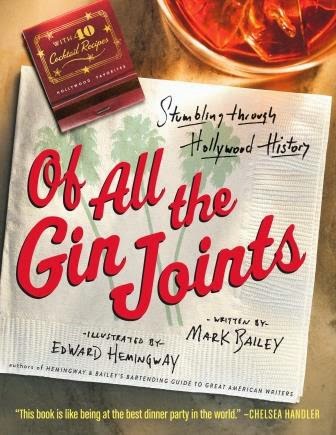Having has bellied up to the bar before with Hemingway & Bailey's Bartending Guide to Great American Writers, Bailey brings artist Hemingway along for plenty of oddly twisted caricatures of all the inebriates. They also offer up forty cocktail recipes and short histories of some of the great restaurants, bars, and nightclubs of days gone by like Chasen's, Ciro's, and The Brown Derby.
WhiIe I had heard a few of these before like Sinatra and Ava Gardner drunkenly shooting out streetlights and the massive binges of Faulkner and Raymond Chandler, Errol Flynn and Spencer Tracy, most were new to me and highly entertaining. The excesses of Richard Burton and Liz Taylor, the tag team power drinking of Richard Harris and Peter O'Toole, and the wagering by Jackie Gleason and saloon keeper Toots Shor were among my favorites.


